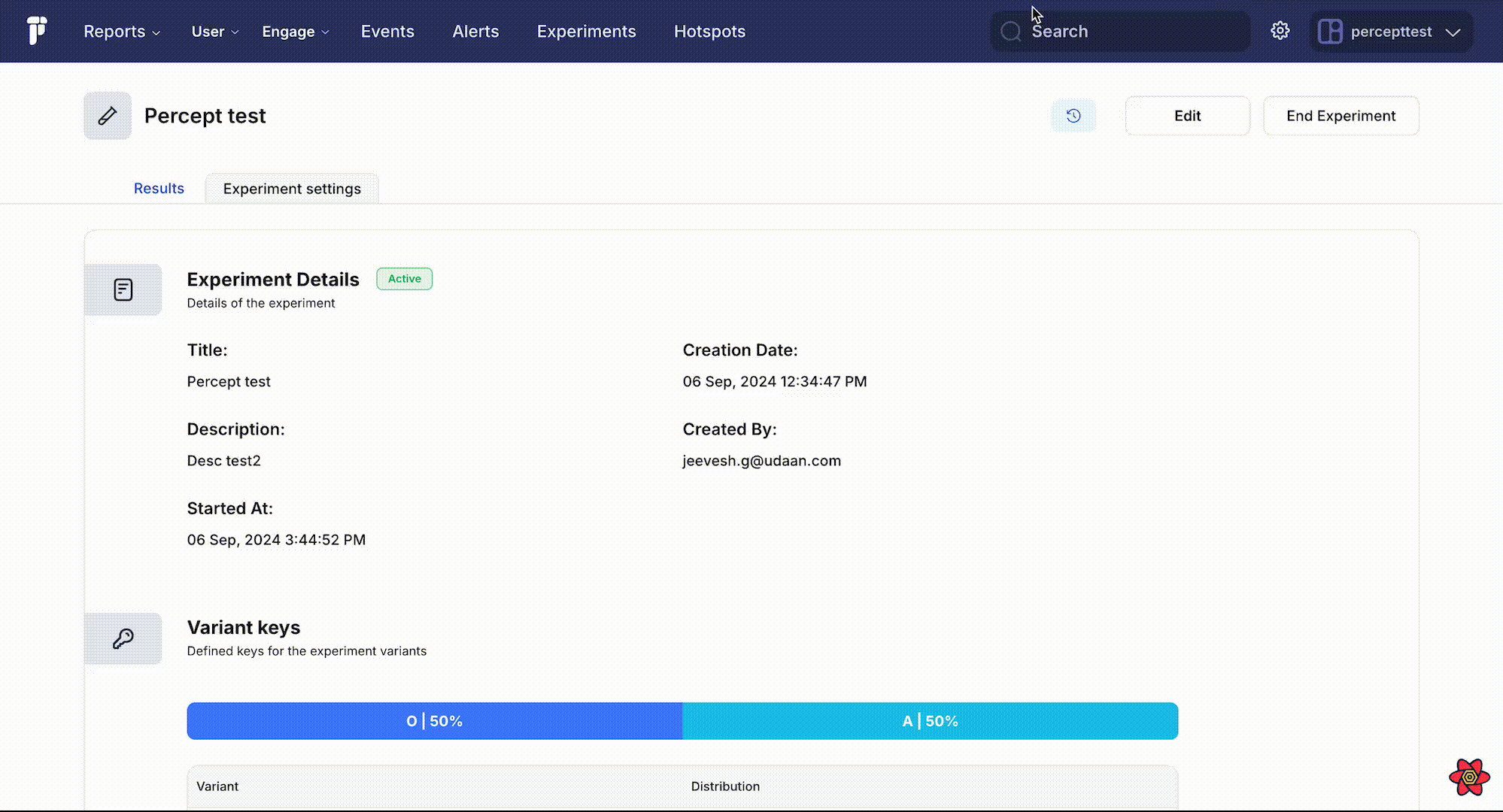End experiment

Making Data-Driven Decisions
-
Identifying the Winning Variant:
- After analyzing the results, identify the winning variant—the one that shows the best performance across key metrics such as conversion rates, engagement, and statistical significance.
- Once you've determined the winning variant, decide if it should replace the control group and be deployed to a larger user base.
- Action: For example, if Variant A significantly outperforms the control, you may choose to implement it as the new default experience for a specific user segment or all users.
-
Rolling Out the Winning Variant:
- Once you've identified the winning variant, update your code to implement the changes associated with the winning variant. Deploy these changes across your platform before ending the experiment.
- Important: Do not end the experiment before deploying the changes, as this can cause users to fall back into the control group or an undefined state, leading to an inconsistent experience.
-
Iterating on Your Findings:
- A/B testing is an ongoing process. Use the insights from each experiment to inform future tests, regardless of whether your variant won or lost.
- Continuously refine your hypotheses, make necessary adjustments, and run new experiments to further optimize your product.
- Tip: Regular iteration and analysis will drive continuous improvement in user experience and business outcomes.
Example Walkthrough
Let’s walk through an example:
- You run an experiment comparing a new onboarding flow (Variant A) against the existing flow (Control).
- The experiment shows that Variant A improves conversion rates by 15% with a 98% statistical significance, especially among new users.
- Before ending the experiment, you implement the new flow in your code and deploy it to ensure a smooth transition for all users.
- Finally, you end the experiment, ensuring all users experience the improved onboarding flow without falling back into the control group.
By following this approach, you'll ensure a smooth rollout of winning variants, preventing disruptions, and making data-driven decisions that improve both user experience and business results.